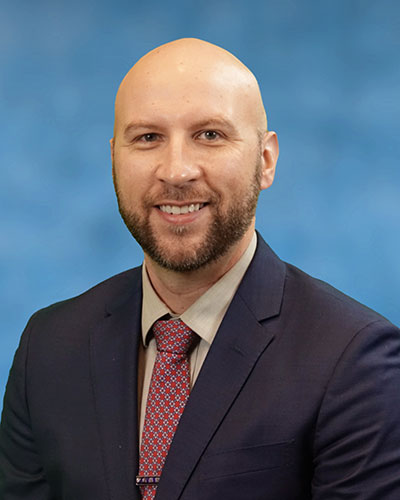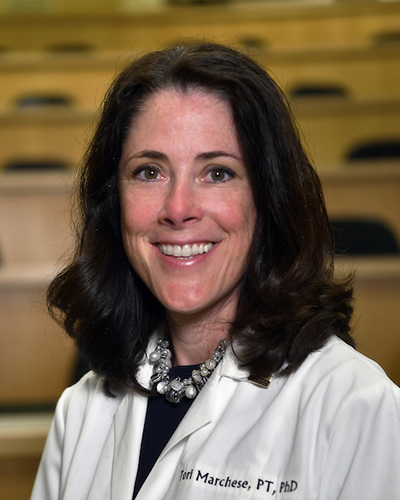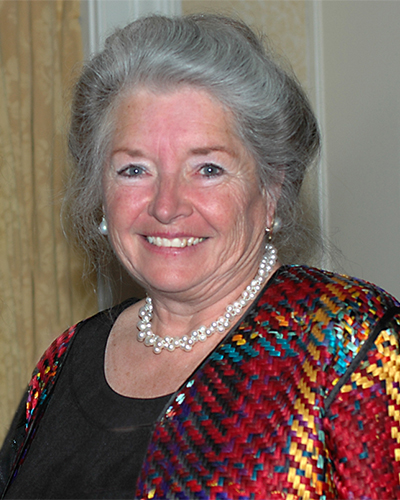March 07, 2022 | Deborah Kotz
Heart Attack Patients Unable to Make Ends Meet Have a 60% Higher Risk of Dying within Six Months Compared to Those Who Are More Financially Secure
Older adults who report being under severe financial strain were substantially more likely to die within six months of having a heart attack compared to those with moderate or no financial strain, according to a new study led by University of Maryland School of Medicine (UMSOM) researchers. The findings were published last month in JAMA Internal Medicine and point to glaring disparities in medical outcomes due to financial circumstances.

In the study, he and his colleagues from Yale School of Medicine examined data from nearly 3,000 participants of the SILVER-AMI study, which tracks the health outcomes of adults aged 75 and over who have had heart attacks. They found nearly 17 percent of older adults under severe financial strain (not having enough money to make ends meet each month) died within six months of being discharged from a hospital after a heart attack. That compares to 9 percent of those with moderate financial strain and 7 percent of those with no financial strain.
After adjusting for chronic conditions and other health factors, Dr. Falvey and his colleagues found that being under severe financial strain increased the risk of death by 61 percent compared to those who had moderate or no financial strain. While the study did not identify reasons for why economic hardship would increase the likelihood of dying, lack of access to vital medications and transportation barriers to follow-up healthcare appointments could play a role, according to Dr. Falvey. Biological stressors, such as elevated inflammation, are also associated with financial strain and likely an important factor.
“Many of the participants in our study under severe financial strain were not living below the poverty line or enrolled in safety net options such as Medicaid,” Dr. Falvey said. “This means we would have no way of knowing who these patients are if we do not ask this question when we take their medical history.”
Hospitals should consider asking this question during discharge planning to help identify those patients who are particularly vulnerable to worse health outcomes due to their financial circumstances, he recommended. Social workers and other hospital staff could then arrange for referrals to free or subsidized transit services, programs that assist with medication co-payments for low-income individuals, or community organizations who can provide or loan needed durable medical equipment and devices.
“This is an important finding that points to the need to identify and address economic disparities in our patient population,” said E. Albert Reece, MD, PhD, MBA, Executive Vice President for Medical Affairs, UM Baltimore, and the John Z. and Akiko K. Bowers Distinguished Professor and Dean, University of Maryland School of Medicine. “We see a real cost in terms of shorter lives in those patients who cannot make ends meet every month, that may not be due to the limits of medical care, but to our inability to provide these patients with access to that care and the services they need."
About the University of Maryland School of Medicine
Now in its third century, the University of Maryland School of Medicine was chartered in 1807 as the first public medical school in the United States. It continues today as one of the fastest growing, top-tier biomedical research enterprises in the world -- with 46 academic departments, centers, institutes, and programs, and a faculty of more than 3,000 physicians, scientists, and allied health professionals, including members of the National Academy of Medicine and the National Academy of Sciences, and a distinguished two-time winner of the Albert E. Lasker Award in Medical Research. With an operating budget of more than $1.2 billion, the School of Medicine works closely in partnership with the University of Maryland Medical Center and Medical System to provide research-intensive, academic and clinically based care for nearly 2 million patients each year. The School of Medicine has nearly $600 million in extramural funding, with most of its academic departments highly ranked among all medical schools in the nation in research funding. As one of the seven professional schools that make up the University of Maryland, Baltimore campus, the School of Medicine has a total population of nearly 9,000 faculty and staff, including 2,500 students, trainees, residents, and fellows. The combined School of Medicine and Medical System (“University of Maryland Medicine”) has an annual budget of over $6 billion and an economic impact of nearly $20 billion on the state and local community. The School of Medicine, which ranks as the 8th highest among public medical schools in research productivity (according to the Association of American Medical Colleges profile) is an innovator in translational medicine, with 606 active patents and 52 start-up companies. In the latest U.S. News & World Report ranking of the Best Medical Schools, published in 2021, the UM School of Medicine is ranked #9 among the 92 public medical schools in the U.S., and in the top 15 percent (#27) of all 192 public and private U.S. medical schools. The School of Medicine works locally, nationally, and globally, with research and treatment facilities in 36 countries around the world. Visit medschool.umaryland.edu
Contact
Deborah Kotz
410-706-4255 or 410-504-0054 (cell)
dkotz@som.umaryland.edu
Related stories

Monday, October 24, 2022
Significant Number of Seniors Rely on Failing Public Transit Systems to Get to Medical Appointments
About one in 10 seniors who live in cities reported that they use public transportation, and 20 percent of older transit users said they relied on trains and buses to get to their doctor appointments. Frailty and living in an area with broken sidewalks were both linked to a lower use of public transit, according to a new study led by University of Maryland School of Medicine (UMSOM) researchers.

Wednesday, June 03, 2020
UM School of Medicine's Department of Physical Therapy and Rehabilitation Science Receives Endowment Gift from Pivot Health Solutions; Will Advance Research and Train Next Generation of Scientists in Physical Rehabilitation
Victoria G. Marchese, PhD, PT, Chair, Department of Physical Therapy and Rehabilitation Science (PTRS), University of Maryland School of Medicine (UMSOM), announced that Pivot Health Solutions has given $250,000 to fund the Pivot Health Solutions Physical Rehabilitation Science PhD Education Endowment. This important gift will be used as a critical resource for PhD students in Physical Rehabilitation Science in the Department of Physical Therapy and Rehabilitation Science (PTRS) at UMSOM.

Monday, May 18, 2020
In Memoriam: Jane Kroh Satterfield, PT ’64, 1942-2020
The University of Maryland School of Medicine (UMSOM) and the Department of Physical Therapy and Rehabilitation Science (PTRS) are mourning the death of Jane Kroh Satterfield, PT ’64, who passed away on May 10, 2020 at the age of 78. Mrs. Satterfield, a native Baltimorean who received her BS in Physical Therapy from the UMSOM in 1964, was a lifelong advocate for the field of pediatric physical therapy, especially in the care for children with special needs.

